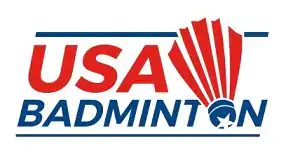COACHES – 6 WAYS COACHES CAN FACILITATE PEER PRESSURE FOR GOOD
- August 31, 2020
- 8:50 am
Peer pressure is often viewed automatically as a negative: It’s shown in TV shows, movies, and books as what the ‘bad kids’ do in order to convince ‘good kids’ to break the rules. But in the right contexts, peer pressure can be a leadership tool that’s used for positive outcomes.
Board-certified family physician and TrueSport Expert Deborah Gilboa, MD, specializes in youth development and knows that young athletes flourish when allowed to take on leadership roles, but she also points out that coaches still have a pivotal part to play in developing effective and positive leaders.
Below, Gilboa explains how to use your team’s social dynamics to improve and strengthen relationships and teamwork.
Peer Pressure is Inherently Neutral
“Peer pressure isn’t inherently positive or negative,” says Gilboa. “It’s leadership: Kindergarten teachers use peer pressure all the time. They say, ‘I like how Tommy is sitting on his square and waiting patiently with his hands in his lap, and then all of the other kids go sit quietly with their hands in their lap, thinking ‘Notice me next!’”
This is the same reason that parents prefer their children hang out with friends with good habits. “Every time we put our kids into a study group, onto a team, or into an extracurricular activity, it’s because we recognize the power of social bonding to influence kids’ behavior,” she adds.
Create Leadership Opportunities
Harnessing that positive peer pressure as a coach means focusing on the current team dynamics and using ‘social mapping.’ Social mapping—figuring out which athletes have the most social credibility and power—can help a coach decide who to put in charge of warm-up drills, who to ask to do demonstrations, or who can lead the team during a game.
Look for athletes who have that social power and who exemplify the behavior and attitude you want to see from everyone on the team. Encourage those athletes to lead.
Differentiate Between Leaders and Bullies
It can be challenging to keep social pressure trending positively, especially with a team that’s constantly acting out. Be aware of the warning signs of bullying, since peer pressure can turn negative. In fact, Gilboa notes that most peer pressure situations can be positive or negative simply depending on context, so you do have to pay close attention to the social cues and the intent behind leadership behaviors.
Use Your Own Social Cache
Whether you believe it or not, you’re the most powerful person at a team practice as the coach. “I tell mentors all the time that as a coach, as a counselor, as an adult, you actually have the most power. You’re the coolest kid in the room.The kids want your attention. They want your approval. They want your admiration,” Gilboa says.
That means you have the ability to use peer pressure the same way a kindergarten teacher would—just focus on the positives. “Point out to the group when an athlete is doing something right,” says Gilboa. “But when you’re correcting someone or pointing out a mistake, try to do so to the individual rather than the whole group.”
Teach Respect Over Popularity
Social cache and popularity aren’t always one and the same, and that applies to your status as a coach. “We can’t focus on popularity. If we focus on popularity, then kids’ respect for us will actually decrease,” Gilboa explains.
Instead, focus on gaining their respect and your popularity will slowly over time go up, says Gilboa. “If you think about middle school teachers, the ones who were popular were really only popular with certain kids. The ones who are well-respected, even if they were tough, are generally respected by everyone.”
Purpose, Attitude, and Behavior
Utilizing positive peer pressure comes down to three tenants: purpose, attitude, and behavior. “Teach athletes that you can always control your purpose, your attitude, and your behavior,” Gilboa says. As a team, try to lay out a framework for your season’s goals with these three things in mind.
Gilboa adds, “Leadership is about figuring out what tactics you are going to use to get a whole group to do what you want, and if you control those three tenants, you’re much more likely to get the outcome that you want in most situations.”
Takeaway
While it has negative connotations, peer pressure is a leadership tool that can be used to achieve positive outcomes for teams and players.
About TrueSport
TrueSport®, a movement powered by the experience and values of the U.S. Anti-Doping Agency, champions the positive values and life lessons learned through youth sport. TrueSport inspires athletes, coaches, parents, and administrators to change the culture of youth sport through active engagement and thoughtful curriculum based on cornerstone lessons of sportsmanship, character-building, and clean and healthy performance, while also creating leaders across communities through sport.
For more expert-driven articles and materials, visit TrueSport’s comprehensive LEARN resource.
This content was reproduced in partnership with TrueSport. Any content copied or reproduced without TrueSport and the U.S. Anti-Doping Agency’s express written permission would be in violation of our copyright, and subject to legal recourse. To learn more or request permission to reproduce content, click here.
